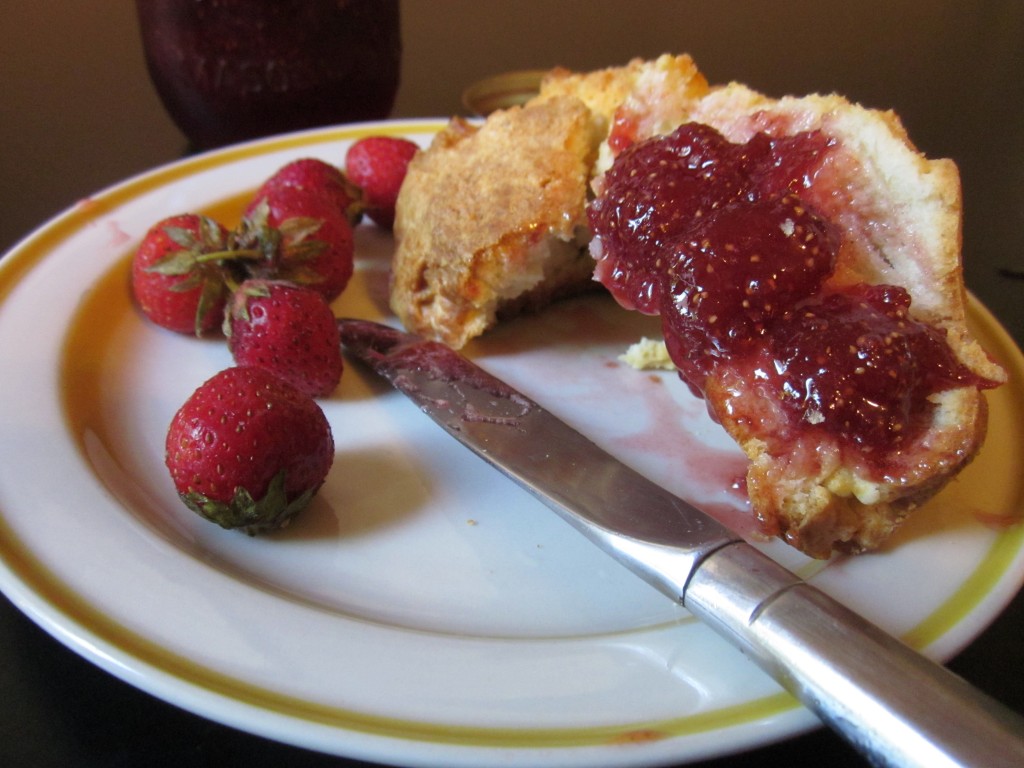Culture
The Hipster’s Cookbook: Short Growing Seasons

Every Tuesday in The Hipster’s Cookbook, Meghan Bongartz teaches you how to make delicious food on a tight budget.
When you live in the Midwest, everything has a limited growing season. You’re unlikely to find fresh local produce at all between November and March, and even outside of that timeframe, you won’t always have many options available to you. We’re halfway through June, and I still have yet to receive anything that isn’t a leafy green with my CSA share. The cool, wet spring (otherwise known as winter that won’t quit) has meant that lettuce and kale have lasted much longer than they normally do before turning bitter. We’re also very, very close to a few glorious months of tomatoes and peppers and cucumbers and other things that will produce for several weeks, if not longer.
Some crops are a little more fleeting. I’ve been anxiously waiting for my CSA to deliver strawberries, and I’m crossing my fingers that they’ll be in my box tonight. Tomato Mountain (the aforementioned CSA) does both Tuesday and Thursday deliveries and they guaranteed that they would be ripe for Thursday customers, but not Tuesday. The strawberry season is so short that I’m sad at the possibility of missing out on a single day of them.
Fortunately, I was in my hometown over the weekend and was able to go strawberry picking with my mom to tide me over. This is how brief strawberry season is: less than three hours from Chicago, we caught the second-to-last day of the you-pick berry season. The berries that were left were smaller and sparser than they would have been if we had gone to the farm even a day earlier. Two hours north of Chicago, the berries weren’t even ripe yet.
I think that the shortness of the strawberry picking season makes them even more of a treat. It’s hard not to eat more than you put in your box to take home if you’re picking them yourself. And with strawberries, it’s perfectly okay to over-indulge because the picked berries don’t stay fresh for very long. If you don’t use them quickly, they’ll go bad and be wasted. We ate the berries we picked over the weekend in smoothies, milkshakes, salads, pies, and by the handful. There’s a limit to how much you can eat in a day, though, so eventually some of them have to be preserved for later. If you just want straight berries, freezing is the best way to keep them intact. A sweeter option, though, is to make jam. This is the recipe that we’ve used to make jam as long as I can remember, and it’s simple (two ingredients!), foolproof, and delicious. I don’t use a proper canning technique for this, so it won’t keep forever and does need to be refrigerated, but it’s so good that you shouldn’t need to worry about storing it for too long anyways.
——
Easy Strawberry Jam
2 quarts fresh strawberries
6 cups granulated sugar
1) Wash strawberries thoroughly and transfer to a large saucepan. Use a potato masher or wooden spoon to crush the berries so that they begin to release some of their juices. They do not need to be turned into a pulp – there should still be large chunks and even whole berries, depending on how big your berries are.
2) Place the saucepan over high heat on the stove and stir in sugar until thoroughly combined. Allow the mixture to come to a rapid boil.
3) Reduce heat to medium or medium high, retaining the rapid boil. Cook for 45 minutes, stirring occasionally, until the mixture reaches a gelling consistency. To test the consistency, scoop a small amount of jam onto a metal spoon and allow it to drip back into the pan, holding it well above the heat. The first few drops should be very liquid, but it should gradually turn thicker and eventually come off the spoon in a sheet.
4) Remove the jam from the heat and transfer immediately to very clean glass jars that have been run under hot water or placed in a pot of boiling water so that the glass is still very hot. Place lids on the jars and let cool before transferring to the refrigerator for storage.